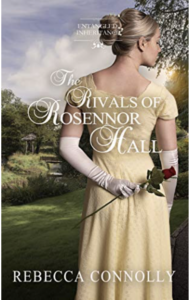I’ve been thinking about character tropes and point of view. What’s the link between the two? Well, that’s the realization I had.
Many of the character tropes—especially in romantic books—are dependent on how other people view that character. And because it’s an outside view, they are flattened to one or two dimensions. The smart girl. The bad boy. The funny friend. The loser. It’s the role that society has assigned them because it’s the easiest box that they fit in.
It’s true that in life, we often view people as a stereotype the first time we meet them. When we are trying to make sense of new people in new situations, it’s easiest if we can quickly categorize people in the file cabinet of our brain. But those preconceived notions and attributes are often heightened in fiction.
So I’ve been studying these romance character tropes, their traits and how they fit in with other types of characters, and that led me to evaluate my own work to see if I have characters that fit into these tropes. There are a few that, yes, I can see how they might fit. Marilee is the pretty girl. She’s frivolous and privileged. She likes pretty things and is used to getting what she wants. But that’s only in Just Ella. When she has her own story, she no longer fits that role, partially because she’s lived a life that crushed that out of her, but mostly because you’re in her head and you can understand who she really is.

We understand a character better when we’re inside their head and can see all their motives, misconceptions and hang-ups. They move beyond a trope and become a full person. But how do we do that with the other characters, especially the love interest?
One way is by using dual point of view.
Adult romance novels are often told from dual point of view. You get to see inside both characters’ heads and understand exactly why they are acting this way and saying that thing. In general, I think this is done so that the reader can get to know both romantic leads and fall for them more easily because we have more to work with than just what we can observe. We get to know both of them as full people.
So then why don’t I do that with my books? The easy answer is that I’ve never wanted to. But I think the underlying reasoning and the one I feel strongly about, is that we experience life from only our point of view.
In real life, we aren’t in our love interest’s head. We can’t fall in love with them because of their inner thoughts and private motivations. We can only fall for them because of what we see, hear and feel from them.
I want my readers to be able to really sympathize with my heroines. I want them to be able to see the heroes the way that my main character sees them. And I want my readers to be able to understand why they fell in love. What did the hero say and do that made their personalities, and their love for the heroine, clear enough that the heroine is willing to fall for them?
Because in life, that’s all we have. We don’t know someone is interested in us until they either SHOW us, or TELL us. And we usually won’t believe it until they have done both consistently for a significant amount of time. If a man says he loves a woman, but then ignores her, it doesn’t matter what’s going on in his head, she’s not going to believe him. And she shouldn’t. Love has to be more than words.
Single point of view also forces our main character to do the hard work of moving from first impressions (character tropes) to seeing them as more than just a general caricature and developing a more complex understanding for that person.
That doesn’t mean my approach is right or wrong. It simply goes about storytelling in a different way. Dual point of view can highlight misunderstandings and why they happen, as well as how they can be conflated and then overcome. It can also help us to see both characters from their own point of view and from the outside. Single point of view forces you to only use the information that one person would have and hopefully cause the reader to buy into that character’s perceptions and decisions. It forces the author to show the love interest falling in love without being in their head.
There are pros and cons to both, but I prefer single point of view because it keeps the mystery alive. If I don’t know what the love interest is thinking, then the inherent suspense of how-will-they-fall-in-love is still there.
But maybe that’s just narrow minded of me. Would y’all prefer that I give in and do a dual point of view book? Or are you a-ok with the way I do things?
Clean Romance Highlights
The Rivals of Rosennor Hall by Rebecca Connolly is free right now.


I can understand why you only do the one perspective. I think having a dual point of view is fun if we as readers really want to delve deeper into a character to see inside their head.
I think I enjoy both. I don’t think Pride and Prejudice would be the same masterpiece that it is if we had dual POV. But I also think it’s really nice to be in the guy’s head sometimes, because I’m not a guy. Granted, I suppose I’m usually in the head of a female author who is in the head of her hero, but still. Perhaps it just depends on the type of story you enjoy. I like reading Michelle Griep books, and I think she does dual POV really well.